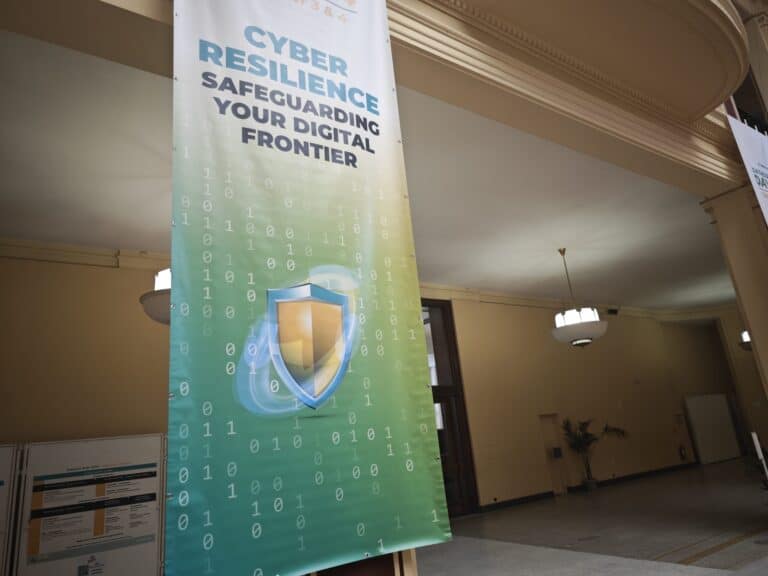Cyber threats seem to become more sophisticated and destructive by the day. This raises the question of what you can still do as a company. Ideally, you will grow beyond reactive actions and act proactively. Enter cyber-resilient storage, which will take data security to the next level. We heard from DataCore about how to make this happen.
The security industry has embraced cyber resilience as a necessary course of action. It increasingly penetrates companies’ core: the IT infrastructure. After all, with pure security tooling, you can arrange a strong fence on the front, but if hackers get through that, they are very close to the source of your data.
This is where cyber resilient storage comes in. The idea is to protect data from loss or corruption where it resides. After all, data is the valuable asset of organizations that hackers are after. Therefore, storage equipment and software must be of absolute security class so that everything has been done in that area to fend off attack. But how do you build a storage strategy that can withstand advanced threats? Setting up your storage with technologies and tools that prevent, detect and recover from incidents.
Protection based on policy and technology
Cyber resilient storage roughly consists of three principles, with prevention being the first. Prevention of cyber attacks is intended to minimize risk and protect critical data. You achieve this by applying immutability to backups, which prevents the backup data from being compromised even by hackers. Combined with air-gapping that lifts the data into an offside or offline location, it further prevents data theft. Write-once-read-many (WORM) is now common when observing immutability and air-gapping. Data is written away at WORM and cannot be modified for a set time. These steps prevent data from being manipulated or destroyed, even if attackers try to access it.
DataCore addresses this part of cyber resilient storage by providing software-defined storage (SDS) features to control immutability and WORM and encrypt data. Thus, data are immediately secured from the moment of storage. To complete this, the DataCore platform must integrate as much as possible with existing data management tools used alongside SDS so that pure backup solutions are supported. A new and even more extensive integration with Veaam is planned in this area. DataCore has long supported Veeam by facilitating storage snapshots. However, Veeam is increasingly dominant in more companies, so an extra step is needed to make snapshot and backup processes faster and more efficient.
Early detection of cyber threats
After preventive action, DataCore pushes detection as a key component under cyber resilient storage. This is because malware may be detected quickly, but the damage may have been done before a company responds effectively. Ideally, then, you implement multiple steps within your entire security strategy. The foundation will then signal malware movement across and within the network. You expand that with the cyber resilient storage principle by being able to detect potentially dangerous activity on storage as well.
DataCore looked at ways to strengthen this part of the cyber resilient storage approach. It has arrived at AI models to detect abnormal patterns and, thus, potential threats. To do this, it recognizes anomalies in data flow or access pattern changes. Such signals indicate a possible attempt to encrypt or steal data. The resulting automated alerts and reports enable organizations to respond quickly and take action to isolate the threat before it spreads further.
In addition, when combined with other security tools, DataCore can quickly check the status of backups and stored data, allowing organizations to know immediately if an attack has occurred. This allows them to isolate and protect data immediately, preventing further damage.
Recovery and protection against data loss
Prevention and detection are the ideal courses of action, but you also want to be prepared for the disaster scenario of an attack. That brings us to the third pillar of cyber resilient storage, which is recovery. After all, if a cyber attack succeeds, recovery must be fast and efficient without losing integrity. This can be done with reliable backups that restore data within a short period to ensure the operational continuity of the organization. Thus, at DataCore, we optimize the platform to by extending the snapshot functionality to speed up the time to restore data. This ensures that systems are back up and running quickly, with minimal downtime and no data loss.
From SDS, organizations can restore locally or remotely. There several recovery points so that a desired, often recent version of data can be restored. Moreover, a future good recovery strategy also means that you can practice recovery processes. That way you are prepared for a real attack and know how to get data and systems back in production. This is where SDS, as the driving force behind cyber resilient storage, offers support.
Cyber resilient storage thus goes beyond the more traditional reactive response to cyber attacks. The approach leads an organization to protect data at all stages, from prevention to detection and recovery. These storage-level steps are needed more than ever as part of a complete security strategy. With the proper steps, a company can become maximally resilient and respond to the wave of attacks coming at businesses every day.
Tip: DataCore covers more and more storage scenarios, what’s next?
